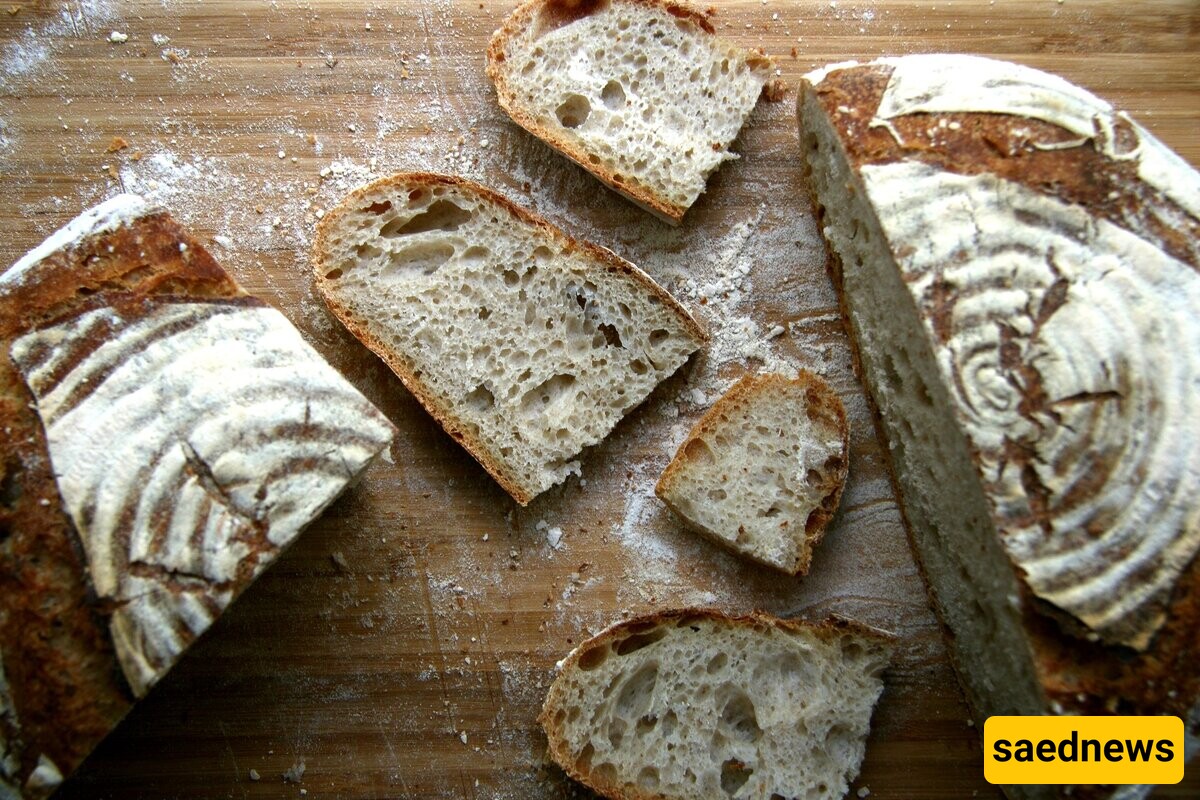SAEDNEWS: Sourdough is naturally fermented dough, relying on wild yeast and "good bacteria" – specifically lactobacillus – rather than commercial yeast for rising. In this article, we'll explore the benefits of sourdough. Join us!


The fermentation process of sourdough can enhance the nutritional properties of bread. Lactic acid bacteria alter the structure of sourdough, making it potentially more nutritious and easier to digest. The history of sourdough fermentation dates back to ancient Egypt and remained common until the Industrial Revolution when quicker bread production methods were developed, leading to the replacement of traditional fermentation with commercial yeast. Recently, sourdough has regained popularity, partly due to its unique taste.
With the abundance of commercial yeast and the convenience it offers, many home bakers view making sourdough bread as a significant challenge, akin to winning the World Cup or an Olympic gold medal. However, sourdough bread is achievable and well worth the effort.
In authentic sourdough bread, a fermented dough starter is used instead of yeast. It contains less gluten, fewer anti-nutrients, and has a lower pH than regular bread.
When flour and water are left at room temperature for a few days, natural bacteria (such as lactobacillus) and yeast begin to ferment the dough, producing lactic acid, which gives sourdough its pleasant, tangy flavor.
Flour naturally contains various yeasts and bacterial spores. When combined with water at room temperature (between 65 and 85 degrees Fahrenheit), the bacteria break down the starch in the wheat into sugars (glucose and maltose), which are then metabolized by the yeast.
No, although they have similarities, they are different. Ezekiel bread is made from sprouted grains and typically contains no yeast. Sprouting grains reduces enzyme inhibitors and releases nutrients for easier absorption, similar to fermentation. However, sourdough takes longer to prepare and is usually not made with sprouted flour.
267 grams bread flour
33 grams whole wheat flour
228 grams water (chlorine-free)
60 grams levain
6 grams salt
35 grams flour
35 grams water (chlorine-free)
5 grams sourdough starter
Prepare the Levain: In a clean jar, mix 35 grams flour, 35 grams chlorine-free water, and 5 grams sourdough starter. Cover and let it sit for 8 hours until it triples in size.
Autolyse: After 7 hours, mix the flours and chlorine-free water. Cover and let it rest for 1 hour.
Combine Ingredients: After the levain has rested for 8 hours, add 60 grams of it to the flour and water mixture. Mix with your fingertips and let it rest for 30 minutes.
Add Salt: Add salt to the dough and knead with your fingertips. Cover and let it rest for 30 minutes.
Light Fold: On a moist surface, stretch and fold the dough from each side. Place it back in the bowl, cover, and let it rest for 30 minutes.
Lamination: On a moist surface, thinly spread the dough, fold it, place it in a clean bowl, cover, and let it rest for 45 minutes.
Coil Folds: Perform three coil folds at 45-minute intervals. Each time, fold the dough from each side underneath itself with moist hands. Let it rest covered.
Shape the Dough: Form the dough into a round shape, cover, and let it rest for 30 minutes. Shape it again, place it in a floured cloth-lined container, cover with plastic wrap, and let it rest for 15 minutes. Then refrigerate for 12 hours.
Bake: Preheat the oven with a cast iron or aluminum pot at 250°C (482°F). Remove the dough from the refrigerator, transfer it to the hot pot, dust with flour, score the top, and cover. Bake for 20 minutes, then reduce the temperature to 220°C (428°F), remove the lid, and bake for another 20 minutes until golden. Enjoy!
Sourdough bread is an ancient, high-quality bread that predates the use of commercial yeast. It was commonly used in homes around the world. Sourdough is often described as having a stronger flavor and better texture compared to other breads.

